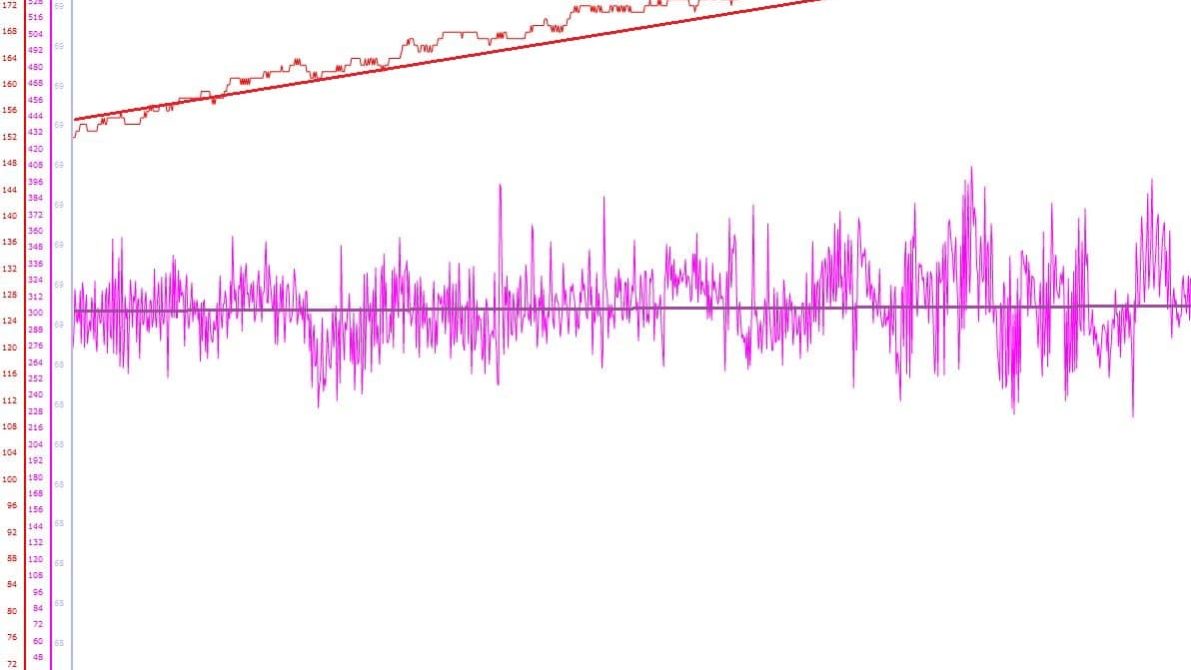In Power Part 2, I explained that training with heart rate has value and will give you a relative idea of effort level but also has limitations. HR is effected by multiple variables (fatigue, stress, caffeine, etc.) and lags behind actual effort. Power is a superior metric because ultimately what we care about come race days is your output (pace or power). When we are able to compare input (heart rate) and output (power or pace) we have an even more powerful training tool at our disposal.
“Base Training” and “Aerobic Endurance” are terms that are very common in the endurance community and it’s no secret that aerobic endurance is a critical ability for athletes looking to compete in steady state events. Endurance sports are first and foremost dependent on the aerobic system, composed primarily of the heart, lungs, blood, and the muscles' aerobic enzymes. By comparing input vs. output we are able to quantify an athletes aerobic fitness.
When aerobic fitness improves we see a minimal amount of cardiac (heart rate) drift relative to a constant output (power or pace). When the two remain constant over a period of time they maintain “parallel”. This relationship between input (heart rate) and output (power or pace) is referred to as coupling. As you can see from plot below HR and Power stay very constant and remain parallel, therefore they are considered “coupled.”
Click on Image to View a Full Size Plot
When input (heart rate) and output (power or pace) are no longer parallel in a workout (i.e. one variable remains steady while the other drifts), the relationship is said to have “decoupled”. Note that this could either be an increase in HR or a decrease in pace or power (when the other is held constant). The plot below shows significant decoupling. As you can see, the athletes HR continues to drift as the power is held constant.
 Click on Image View a Full Size Plot
Click on Image View a Full Size Plot
There will always be some cardiac drift, however excessive decoupling indicates a lack of aerobic endurance (fitness). It is typically good to see less than 5% decoupling in an aerobic workout (Zone 2 described in Power Part 6). The duration of the workout depends on the event that the athlete is training for. Below are recommended durations an athlete should shoot for to ensure they are aerobically fit. Note that in all cases you should have an optimal decoupling of less than 5%.
| Sprint/Olympic: | Bike 1.5hr - 2hr | Run 1hr |
| Half Ironman: | Bike 2.5hr - 3.5hr | Run 1hr - 2hr |
| Full Ironman: | Bike 4hr - 5hr | Run 2hr - 2.5hr |
The easiest way to determine the percentage of decoupling in a workout is to use software such asTraining Peaks, which will automatically do the calculation for you. If you do not have access to such software or would like to do the calculation by hand you can simply perform the following procedure:
-
Split the workout into two halves and find the average normalized power or speed (cycling or running respectively) and the average heart rate for each half.
-
Divide the power or speed by heart rate for each half to establish a ratio.
-
Subtract the first half ratio by the second half ratio and dividing the remainder by the first half ratio.
-
Multiply that value by 100 and the result is the percentage of your decoupling.
Example: A Two Hour Aerobic Cycling Workout
Average Normalized power: 175 watts
Average HR: 152 BPM
-
Note: It’s best to use the lap function on your device or some type of software to split the workout into halves.
First Half: Average Normalized power: 173
First Half: Average HR 147
Second Half: Average Average Normalized power: 177
Second Half: Average HR 157. -
First Half: 173/177 = 1.18
Second Half: 177/157 = 1.13 -
(1.18-1.13) / 1.18 = 0.04
-
0.04 * 100 = 4% decoupling
Aerobic endurance is fundamentally the most important ability in endurance sports. Once its ability is fully developed, it will allow you to reach a higher level of fitness when you move to more race specific training.
Click Here to Subscribe to Coach Kyle's Blog
Written by Kyle Visin
Santa Barbara Triathlon Club President
USAT Level 1 Coach
Certified CycleOps Power Coach
Co-Founder of KillerTri
A duplicate post is also available at www.killertri.com


